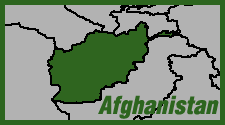 John F. Sopko, the Pentagon's Special Inspector General for Afghanistan Reconstruction, gave a sobering assessment last week of the situation in the country 15 years after the fall of the Taliban. Corruption is endemic and security practically non-existent. More than 700 schools have been closed in recent months due to the ongoing insurgency. And despite at least $7 billion in counter-narcotics spending, opium production hit 3,300 tons in 2015—exactly the same level it was in 2001 when the US invaded.
John F. Sopko, the Pentagon's Special Inspector General for Afghanistan Reconstruction, gave a sobering assessment last week of the situation in the country 15 years after the fall of the Taliban. Corruption is endemic and security practically non-existent. More than 700 schools have been closed in recent months due to the ongoing insurgency. And despite at least $7 billion in counter-narcotics spending, opium production hit 3,300 tons in 2015—exactly the same level it was in 2001 when the US invaded.
"Fifteen years into an unfinished work of funding and fighting, we must indeed ask, 'What went wrong?'" Sopko said in an address at at Harvard University on April 7, CNN reported.
The debacle is becoming increasingly inescapable. At a House hearing on Afghanistan reconstruction spending March 16, Rep. Thomas Massie (R-KY) pressed Pentagon personnel on what kind of metrics they use to gauge success in their counter-narcotic efforts. "The war on drugs in Afghanistan," Massie concluded in comments picked up by Reason. "to the extent there is a war on drugs, has been a failure."
The grim reality was also acknowledged by the outgoing top commander in Afghanistan, Gen. John Campbell, in testimoy before the Senate Armed Services Committee in February. "Afghanistan is at an inflection point" and 2016 could be "no better and possibly worse than 2015," he said. But as CNN noted, his message was one of staying the course: "Now, more than ever, the United States should not waver in Afghanistan."
Despite the supposed US "withdrawal," the war is only escalating, US troops remain involved in the fighting—and opium is clearly a goad of the conflict. The Taliban have now gained five of Helmand province's 14 districts as fierce fighting continues, the New York Times reported March 16. While the account did not mention it, Helmand is Afghanistan's opium heartland—so control of this territory and its lucrative poppy plantations is strategic for carrying the war across the country.
And as if the Pentagon didn't already have its hands full with the Taliban, a growing ISIS insurgency now poses a second threat. In January, the State Department named the ISIS franchise in Afghanistan a "foreign terrorist organization," giving the US military official authorization to got after the "ISIS-Khorasan" group or ISIS-K, CNN reported.
In the latest outrage, US drone strikes killed at least 17 people in eastern Afghanistan's Paktika province April 8. The Pentagon claimed all those killed were militants. But local officials said they were civilians, including a tribal elder, Radio Free Europe reports. Great recruitment propaganda for the Taliban and ISIS, guys.
Ironically, military experts anticipate an imminent lull in the fighting—but only long enough for the opium harvest. Army Brig. Gen. Wilson A. Shoffner, the main spokesman for NATO's Operation Resolute Support, told a Pentagon briefing March 14, according to Military.com: "Within the province from south to north as the weather allows, and we expect to see the same sort of pattern this year. And so we anticipate that spike in activity [by the Taliban] will continue until about the latter part of March and then there should be a lull as the harvest gets under way."
Cross-post to High Times







Recent comments
2 weeks 2 days ago
3 weeks 3 days ago
3 weeks 3 days ago
4 weeks 5 days ago
9 weeks 6 days ago
12 weeks 2 days ago
17 weeks 3 days ago
29 weeks 3 days ago
31 weeks 4 days ago
32 weeks 4 days ago